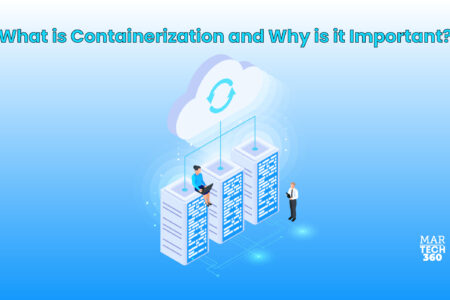Containerization has revolutionized the landscape of software deployment, offering a streamlined approach that bundles applications with their dependencies for seamless execution across diverse environments. In a world where agility, scalability, and resource efficiency are paramount, containerization emerges as a pivotal solution, empowering developers to build, deploy, and manage applications with unprecedented ease and flexibility. Let’s get started.
What is Containerization?
Containerization refers to a software deployment method that consolidates an application’s code alongside all necessary files and libraries required for execution on diverse infrastructure. Traditionally, running an application on a computer demanded installing a version tailored to the machine’s operating system – for instance, deploying the Windows version of a software package on a Windows-based system. Whereas, containerization enables the creation of a singular software package, or container, capable of running seamlessly across various devices and operating systems.
What are the Advantages of Containerization?
Developers leverage this technology to construct and deploy contemporary applications due to the following benefits:
➔ Portability
Software developers employ containerization to deploy applications across multiple environments without the need to rewrite program code. By building an application once, it becomes deployable on diverse operating systems. For instance, identical containers can run on both Linux and Windows operating systems. Developers also utilize containers to update legacy application code to modern versions during deployment.
➔ Scalability
Containers, being lightweight software components, operate efficiently. Unlike virtual machines, containerized applications launch swiftly as they don’t require the booting of an entire operating system. Consequently, developers can effortlessly integrate multiple containers for various applications on a single machine. These containers share computing resources from a common operating system, ensuring that the operation of one container doesn’t impede others in the cluster.
➔ Fault Tolerance
Containerization is instrumental in constructing fault-tolerant applications. Deploying multiple containers for running microservices on the cloud ensures that, since containerized microservices function in isolated user spaces, a malfunctioning container doesn’t impact others. This enhances the overall resilience and availability of the application.
➔ Agility
Containerized applications operate within isolated computing environments, allowing developers to troubleshoot and modify application code without disrupting the operating system, hardware, or other application services. This facilitates expedited software release cycles and enables swift updates through the container model.
Also Read: How to Create an Effective F-Centric Marketing Plan? [+ Free Tips]
Containerization vs Virtualization

1. Resource Utilization
- Containerization optimizes resource utilization by employing orchestration tools such as Docker or Kubernetes, allowing the dynamic initiation and termination of containers based on demand.
- Virtualization relies on failover clusters to operate virtual machines (VMs), incorporating load-balancing support.
2. Operating System (OS) Dependency
- Containers share the host operating system kernel, rendering them lightweight and capable of execution across diverse platforms seamlessly.
- Virtual machines virtualize the entire machine down to the hardware layers, enabling the simultaneous operation of different operating systems on a single host.
3. Isolation and Security
- Virtual machines ensure robust isolation as each VM operates on its distinct virtual hardware.
- Containers, while providing isolation, share the host OS kernel, resulting in relatively less isolation. However, advancements in containerization have bolstered security features to enhance isolation.
4. Portability
- Containers exhibit high portability across platforms as they encapsulate applications along with their operating system, facilitating easy movement between environments.
- Virtual machines encounter limitations in portability due to variations in hardware and virtualization technologies between platforms.
5. Resource Overhead
- Containerization incurs minimal resource overhead owing to the lightweight nature of containers that share the host OS kernel.
- Virtualization imposes higher resource overhead due to the necessity of virtualizing the entire machine.
Containerization prioritizes the lightweight, isolated deployment of applications using shared OS kernels, whereas virtualization involves running multiple instances of complete operating systems on virtual hardware. The choice between containerization and virtualization hinges on specific use cases, resource requirements, and considerations of portability and isolation.
Types of Containerization
· Docker
Docker, also known as Docker Engine, is a widely adopted open-source container runtime. It empowers software developers to construct, deploy, and test containerized applications across diverse platforms. Docker containers are self-contained packages that encapsulate applications and their associated files within the Docker framework.
· Linux Containers (LXC/LXD)
Linux, as an open-source operating system, incorporates built-in container technology. Linux containers (LXC/LXD) provide self-contained environments enabling the simultaneous execution of multiple Linux-based applications on a single host machine. These containers are particularly useful for deploying applications to handle substantial amounts of data. Unlike traditional virtualization, Linux containers don’t duplicate the entire operating system; instead, they consist of essential functionalities allocated within the Linux namespace.
· Kubernetes
Kubernetes is a popular open-source container orchestrator. It facilitates software developers in deploying, scaling, and managing a large number of microservices. Employing a declarative model, Kubernetes streamlines container automation. This model ensures that Kubernetes takes appropriate actions to meet requirements specified in configuration files. Kubernetes has become a cornerstone in the orchestration of containers, enabling efficient management of complex application architectures.
These container technologies offer developers diverse tools and platforms to address specific needs in application development, deployment, and scaling. The choice of container technology often depends on factors such as the nature of the application, scalability requirements, and the developer’s preferences.
Closing Thoughts
Containerization is a revolutionary approach to software development and deployment, enabling the packaging of applications and their dependencies into portable, isolated containers. It offers advantages like resource efficiency, scalability, and easy management, making it a preferred solution for organizations of all sizes. As technology evolves, containerization will continue to shape the future of software development.

